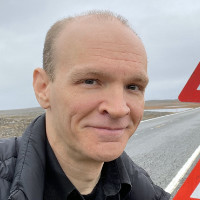Click to watch or watch on YouTube
(the article below accompanies this video)
Today was the day: a trip to the Nazi death camp at Auschwitz-Birkenau. It was one of the things that Masayo and I had been most anticipating in the months leading up to this trip. You can’t go to Kraków and not visit Auschwitz, to learn about a confounding and horrific time in recent history whose shuddering echoes continue to reverberate.
A few years ago we visited the Khmer Rouge’s S-21 prison museum in Phnom Penh, Cambodia, but we knew that Auschwitz was on a much more massive scale. We were nervous and distracted by thoughts of what today would bring.
And on another note, my blood sugars would be pretty good all day until after dinner, when I misjudged some Polish food and soared way over 300.
The morning
My blood sugar at 8:30 was 75: a sign that the mysterious highs of the last few days have finally waned. Our breakfast was yogurt, muffins and instant coffee from a store that we ate in the Tulip Hostel kitchen. I wasn’t sure how much activity we’d be doing today, and when and of what nature, so I had to guess about my Humalog shot.
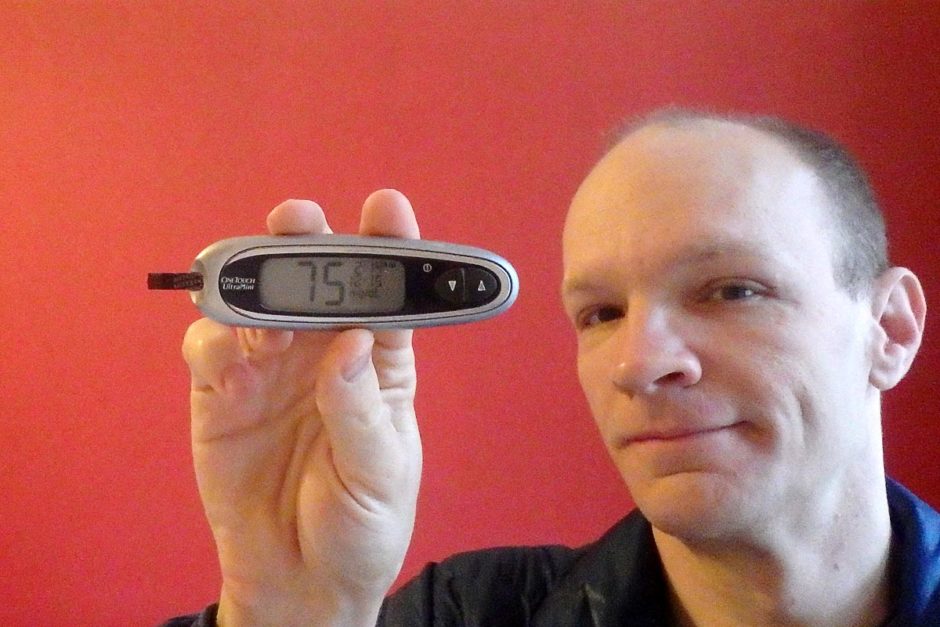
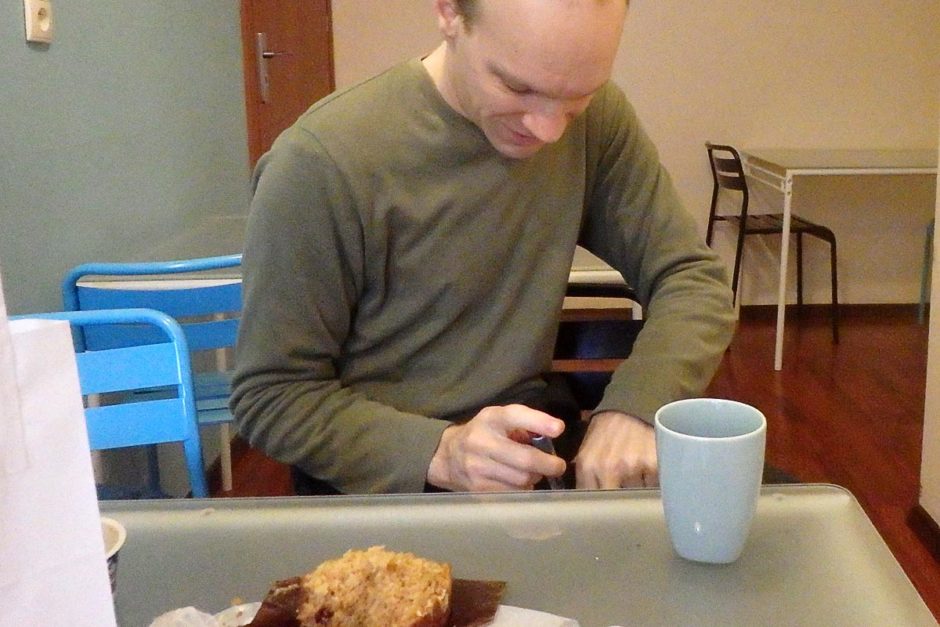
Shooting up in the hostel kitchen area, because I can.
Getting to Oświęcim
The town of Oświęcim is about an hour and a half by minibus from Kraków. The pronunciation of this Polish name is, roughly, “oash vee ENT sim”; its German name of course is Auschwitz (“OWSH vits”).
At the Kraków bus station I approached a window to buy tickets for the bus ride. I’m sure the tellers are adept at understanding pretty much any pronunciation of the destination’s name; it’s a world-famous tourist site. But I wanted to try to get it right, in the local language, and did my best. “Oświęcim…?” I said to the lady, and soon Masayo and I had our tickets (12 złoty each, about $3.60).
The minibus dropped us off behind the entrance to Auschwitz I and we few visitors walked along a long narrow sidewalk beside a fence. It was quiet and a little chilly, and we proceeded silently through the moist, grey, foggy morning air.
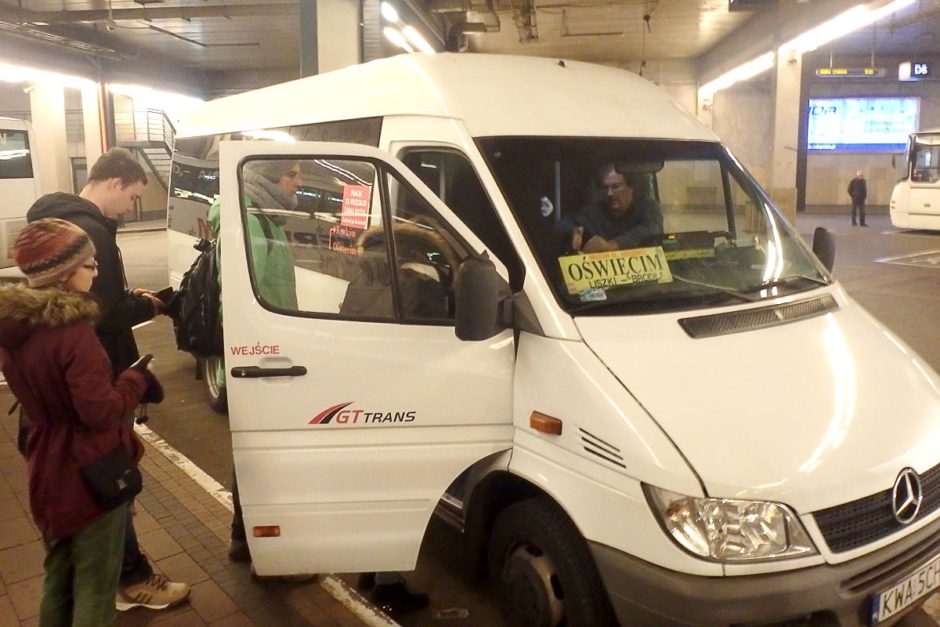
Auschwitz I
Entrance to Auschwitz is free; there is a rule requiring a guide for 60 zł or something but it’s not in force between November and March. So we just walked on in, after buying a small guidebook with a map for 5 zł.
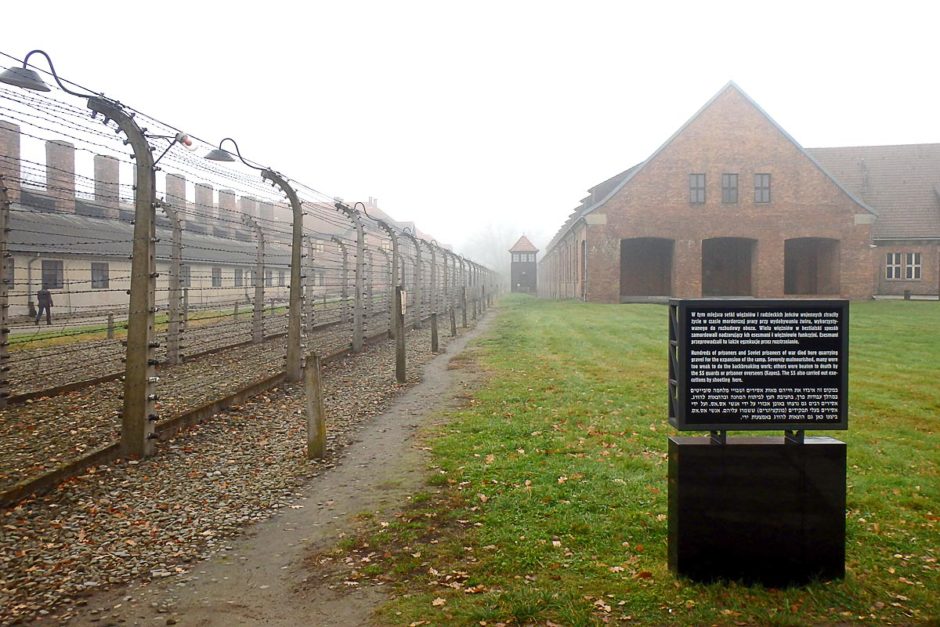
The first thing we saw was the ARBEIT MACHT FREI gate, the cruelly ironic “work sets you free” iron lettering at the entrance. And there it was, right over our heads. It’s quite a feeling to be in the presence of something so famous that you’ve seen in photos so many times. Seeing it yourself is much more visceral and real than photos.
The internet isn’t “making the world a smaller place” at all; you still have to go see it all for yourself.
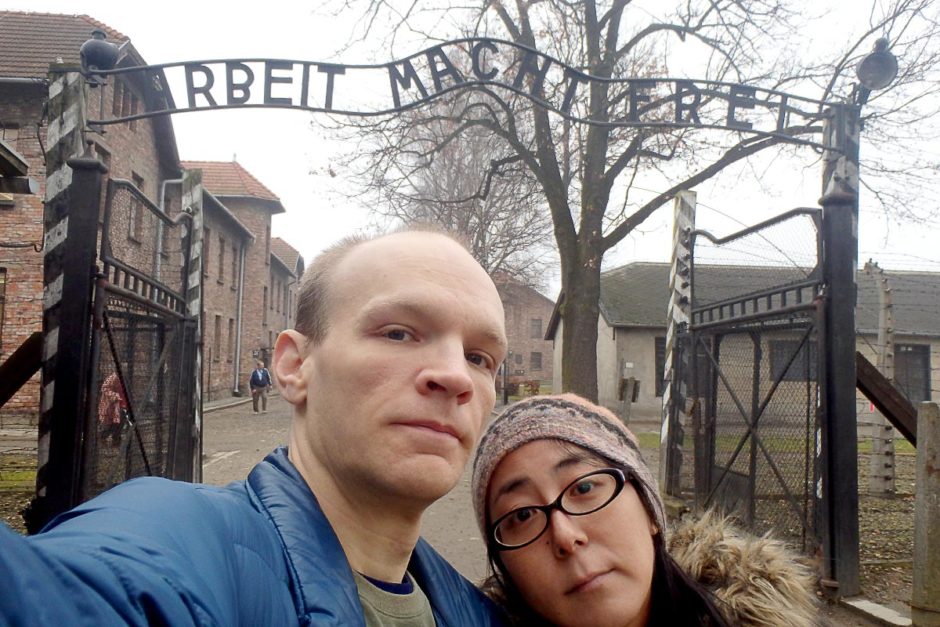
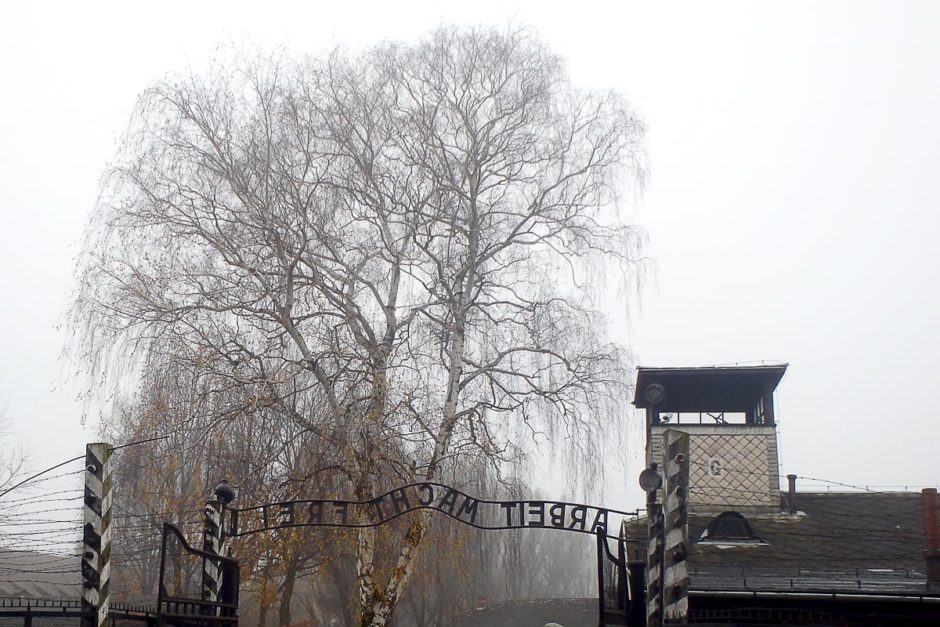
Auschwitz I is the original and smaller center of the camp. The few rectangular buildings stand in their original places; about half are closed to the public but the other half contain various exhibitions.
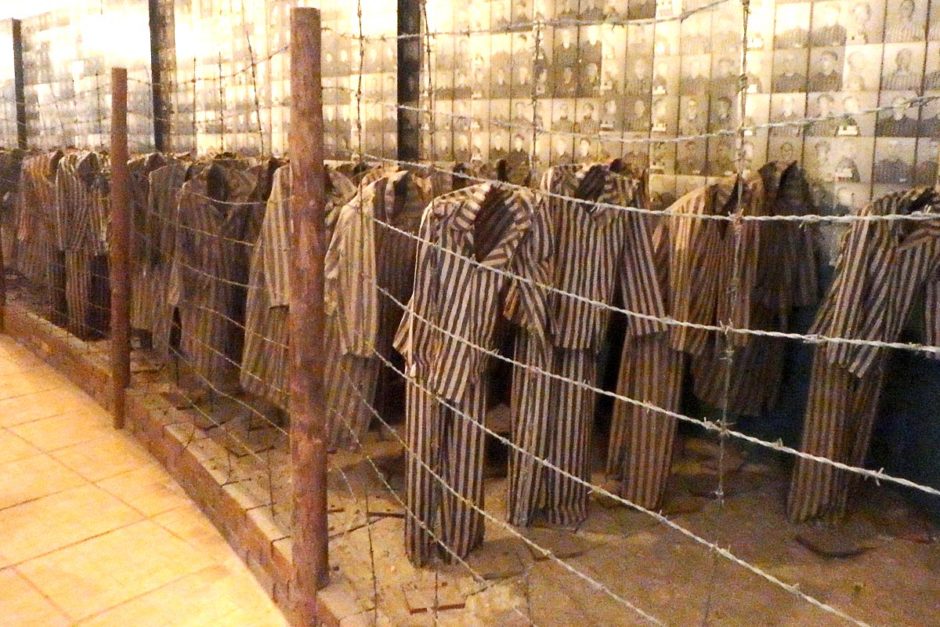
There isn’t really much I can say about Auschwitz. There aren’t any words that haven’t been said, and none that really capture it. The words that repeatedly come to mind as you walk through the exhibits are “why?” and “how?”
But they can’t really be satisfactorily answered. I kept thinking of what Michael Palin said when visiting for his 2007 series New Europe: “I wish I could believe that people will never be like this again.”
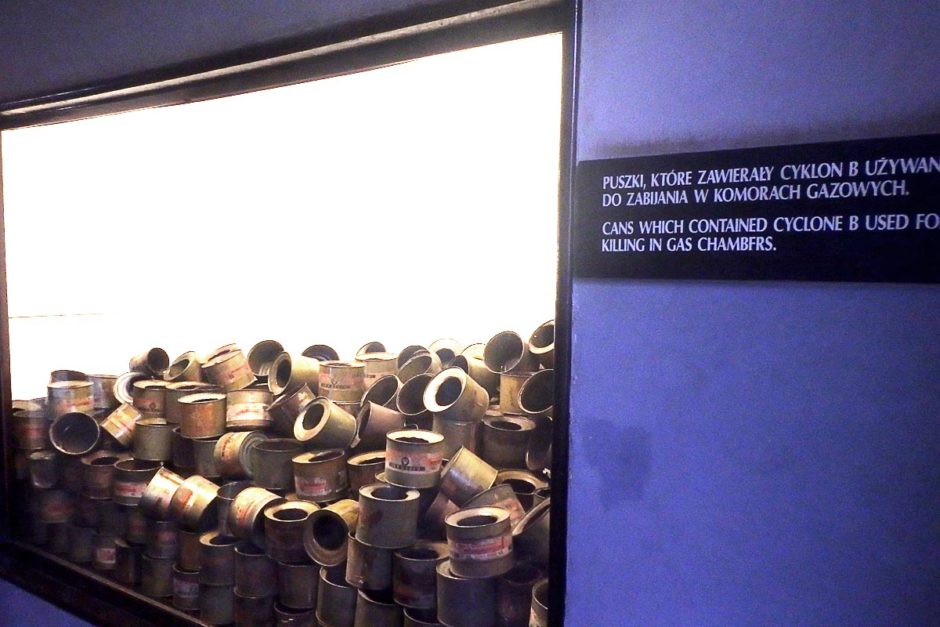
Zyklon B canisters, which came in pellet form and released the gas that killed the prisoners.
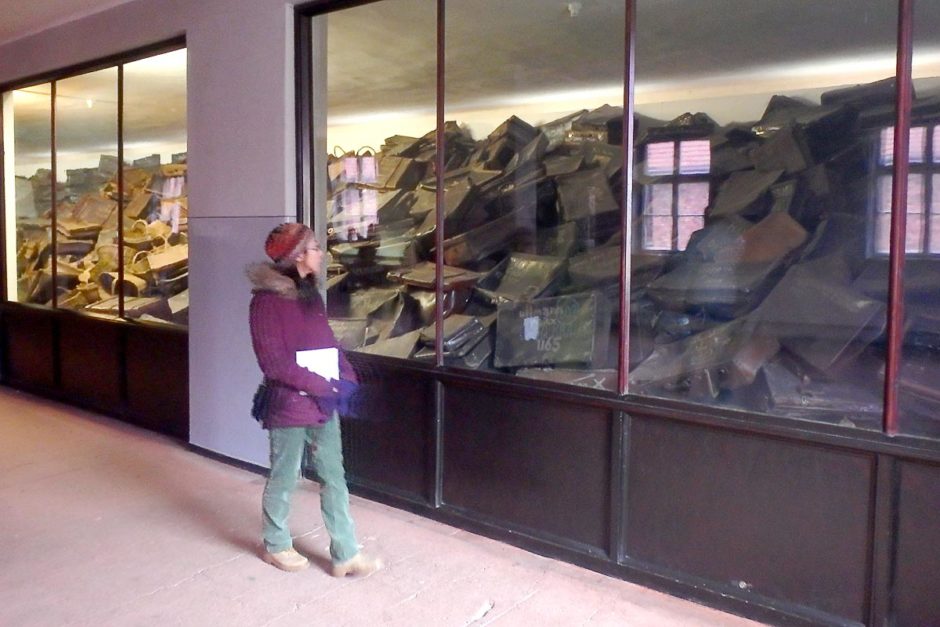
Masayo looks at the piles of prisoners’ suitcases.
Respectful quietness is encouraged at Auschwitz. There are signs in some places (if not others) that say “no photos”, but this wasn’t being enforced and people were snapping away. I tried some but mostly just took things in with my own eyes. Some tour groups were led around by guides; the guides were speaking very low into microphones and the tourists each had headphones to hear.
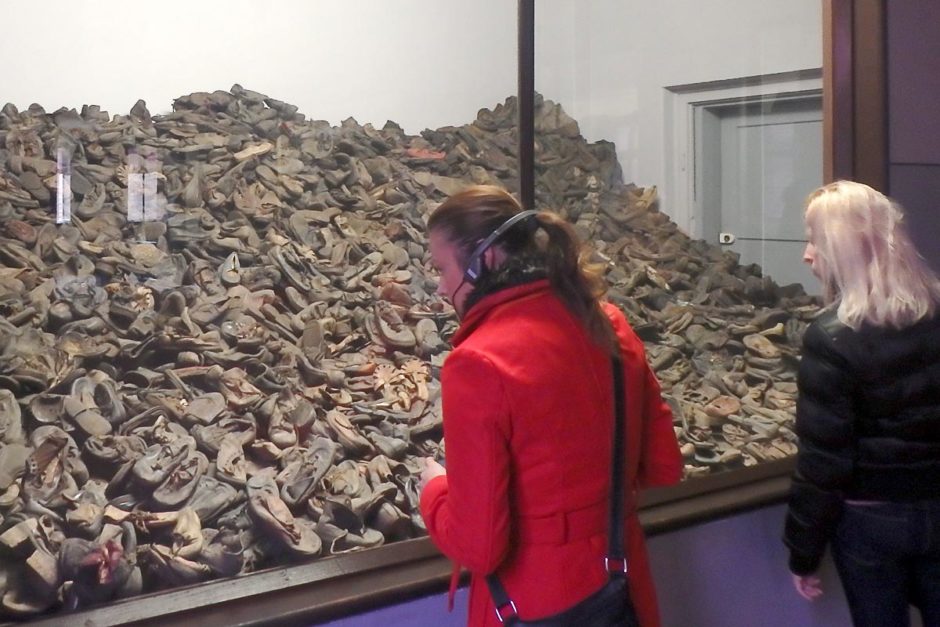
Prisoners’ shoes by the thousands.
Other signs, especially at locations that saw huge numbers of killings — Auschwitz I’s gas chambers, the Death Wall where prisoners were shot — reminded visitors to not make noise and to be particularly respectful. And people were.
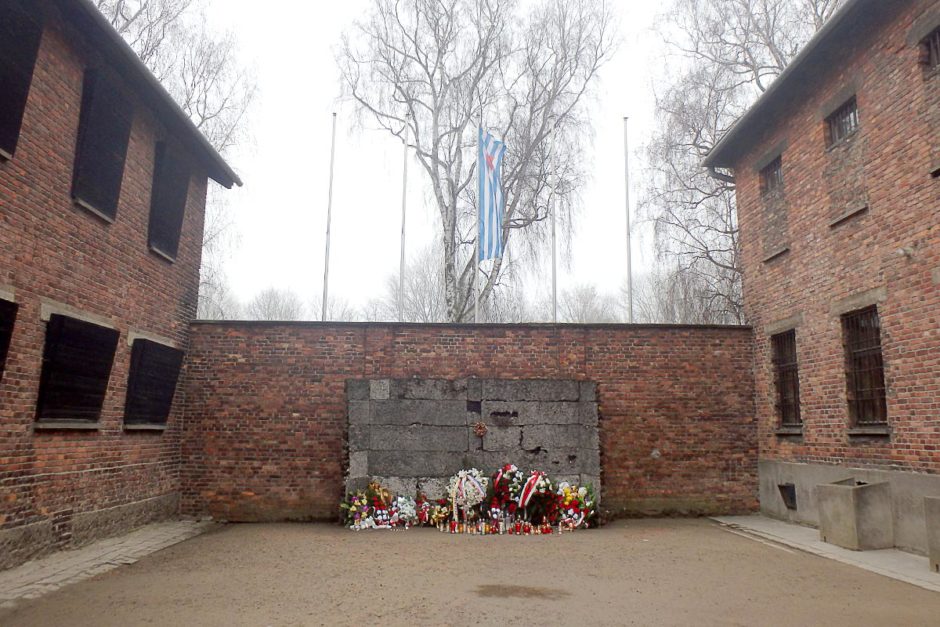
The Death Wall, where the SS shot and killed prisoners following quick “trials” in a nearby room.
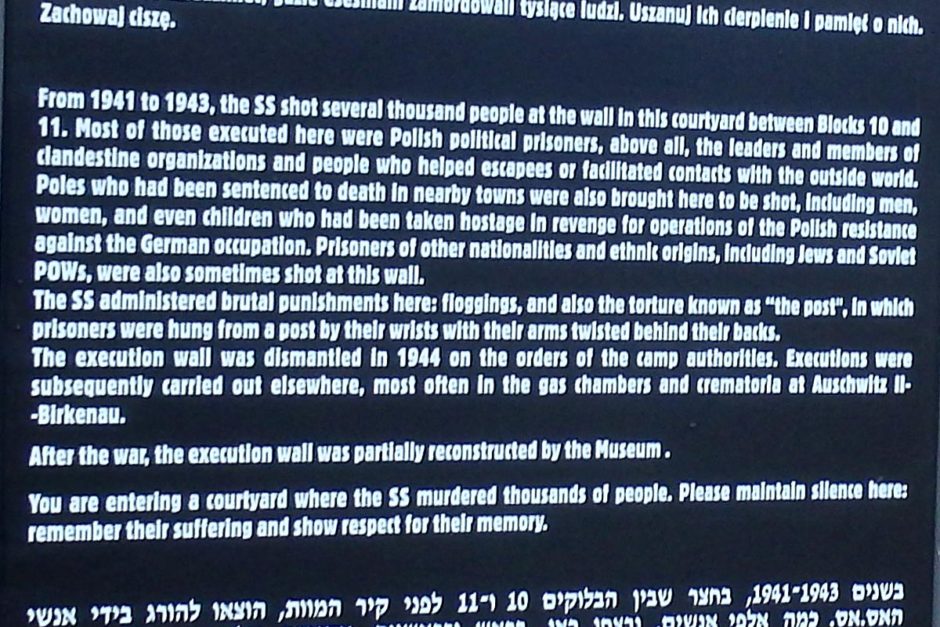
At Auschwitz I you see before your eyes things that bring the whole fabled story into stark reality; it’s bewildering and heartbreaking. (Again, inadequate words. You have to go see for yourself.)
A gigantic pile of human hair, kept by the SS and sold for weaving fabric. Canisters of used Zyklon B pellets, which gave off the deadly gas. Piles of children’s shoes and other personal effects. Official SS photos of the prisoners — mugshots of shaven men, women, and children, guilty of nothing at all but wearing prisoner stripes and with uncertain, fearful looks on their faces, their names written underneath.
And on one edge of the camp, the rebuilt gallows where Auschwitz overseer Rudolf Höß was hanged in 1947 by the Poles, right next to the gas chamber and its big smokestack.
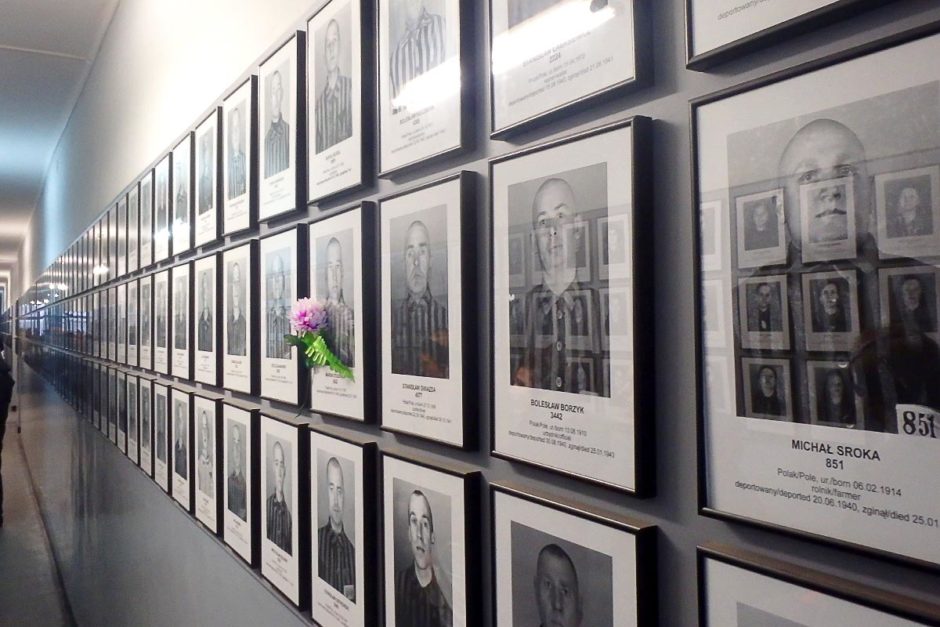
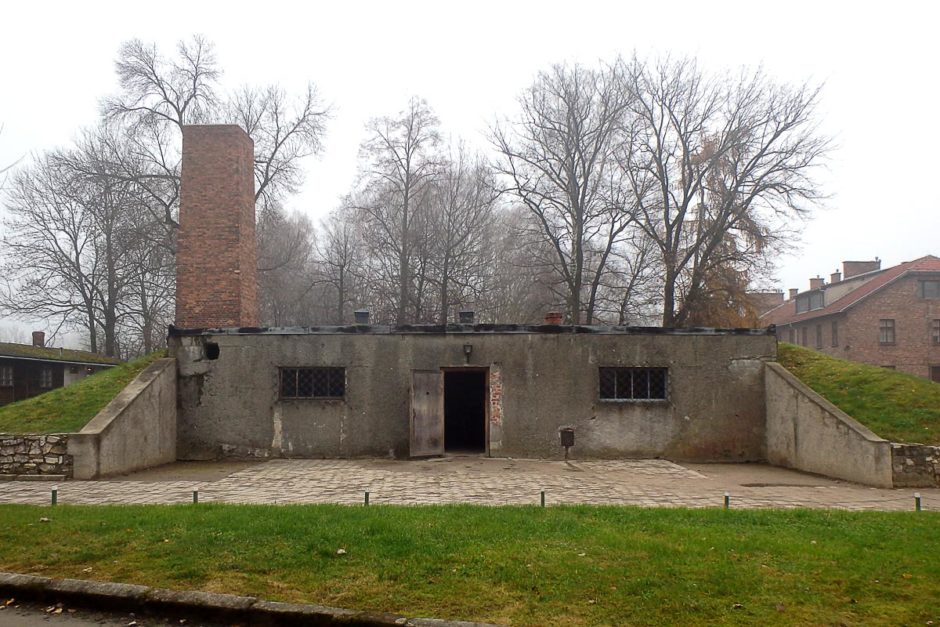
The building where prisoners were gassed and then incinerated.
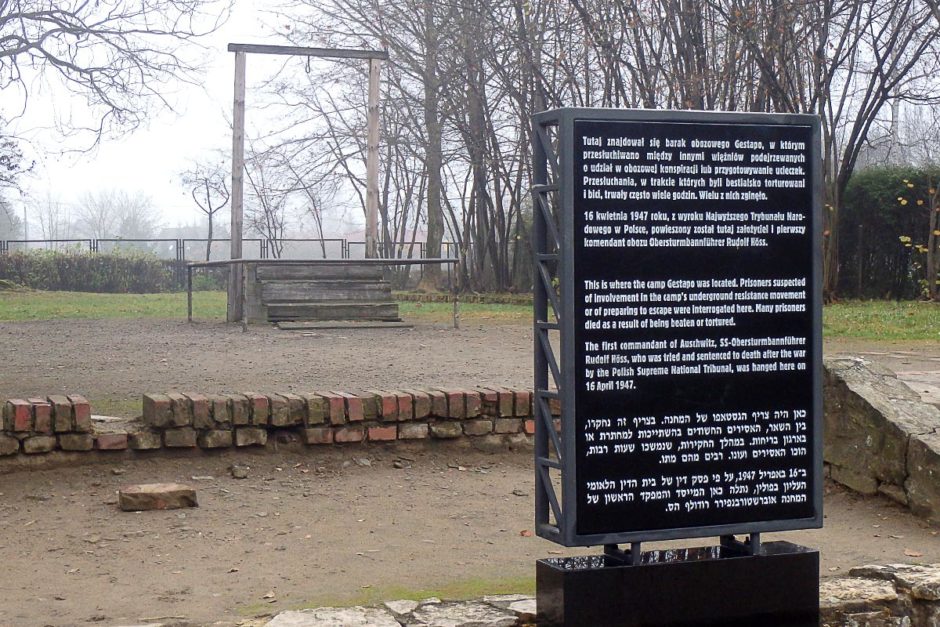
Rudolf Höß’s gallows.
Around 2:00 pm we somberly exited Auschwitz I and found a snack stand out front. My BG was 146, and I bought a Coke Zero and a hot dog. The hot dog bun had been warmed in a microwave and was almost literally hard as a rock, but it seemed silly to complain about it in these circumstances. (I still did.)
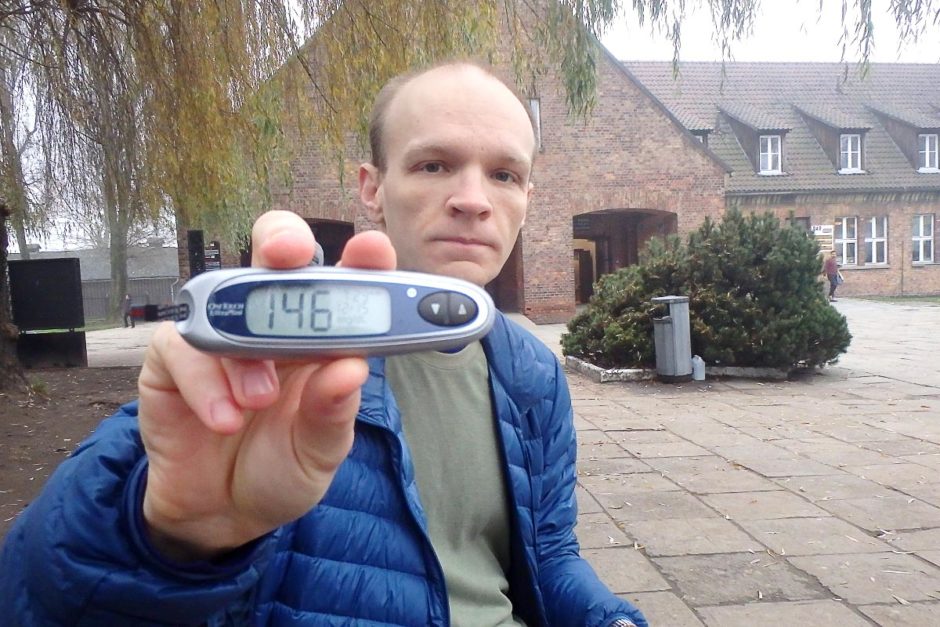
Auschwitz II – Birkenau
We found a free shuttlebus to Auschwitz II in the nearby village of Brzezinka, or Birkenau in German. The Birkenau death camp is very different than Auschwitz I, a much larger addition to the original camp as the number of people being killed began to overwhelm the original facilities. People would be carted in on overcrowded trains, thousands a day, and either sent directly to the gas chambers, or (if strong young males) kept aside for labor.
Birkenau is about 3 km from Auschwitz I. Darkness was approaching as the large, packed bus moved through the rural countryside.
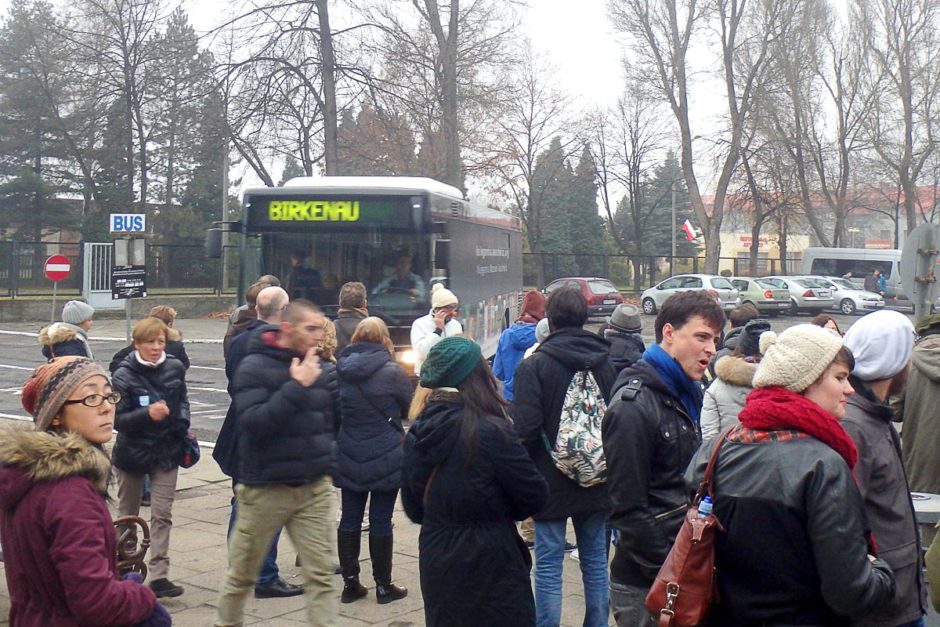
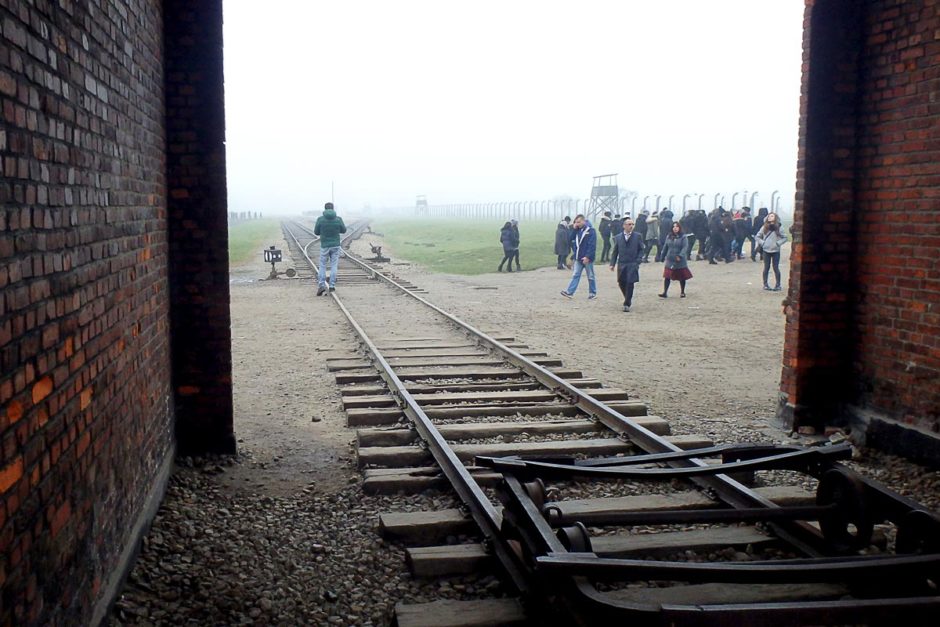
The train tracks that led into Birkenau.
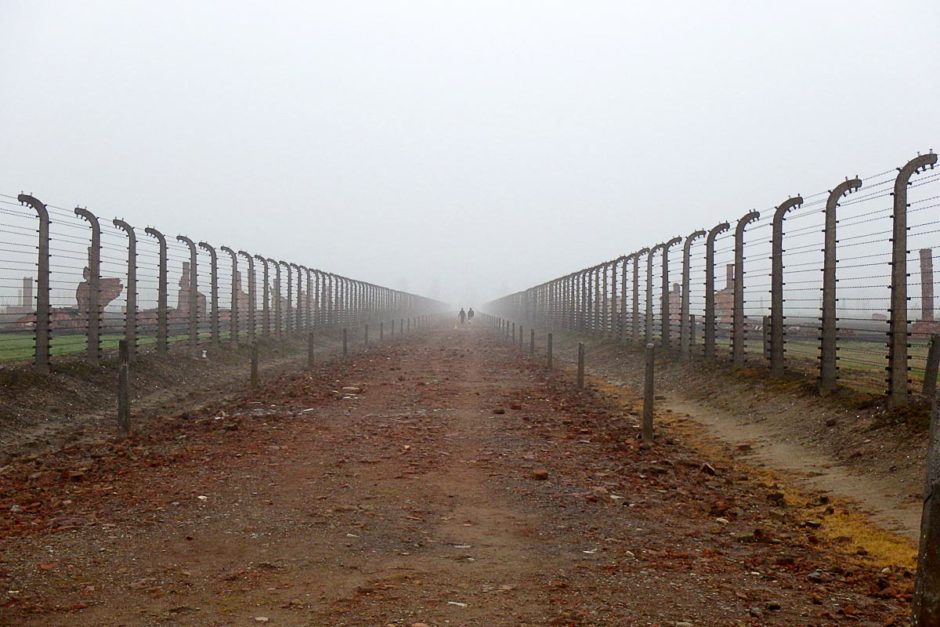
Birkenau is a huge, open, flat area with rectangles on it. They’re the concrete foundations of the buildings that housed the thousands of prisoners, seemingly endless rows of buildings that were destroyed by the retreating SS towards the end of the war. Now only their crumbling brick hearths remain.
Barbed wire fences run in long rows between them and the moribund views seem to extend forever in every direction. The place is so huge, and the weather today was so somber and misty, that it only underscored the enormity of what occurred here. It wasn’t even that long ago, just a few decades.
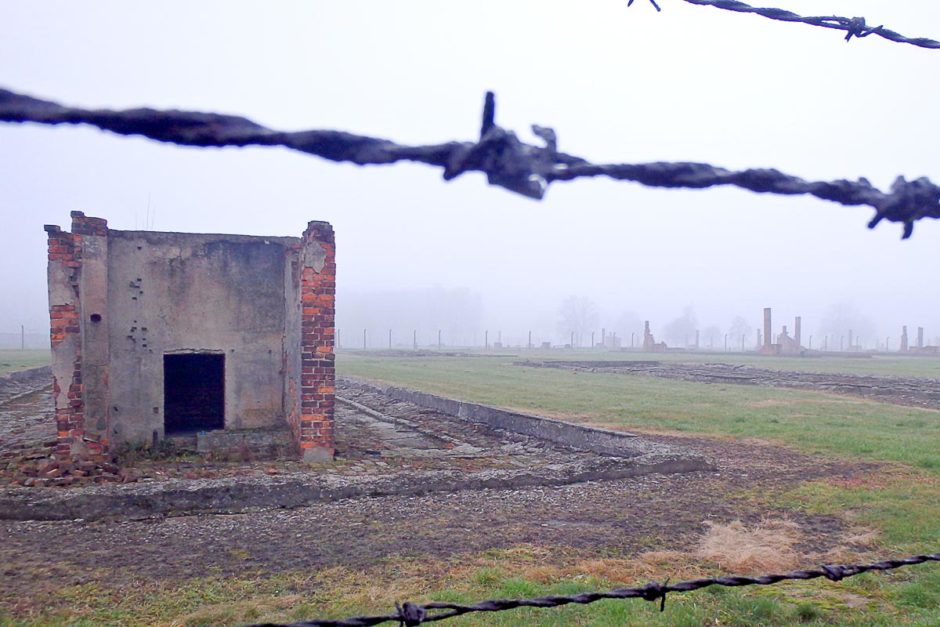
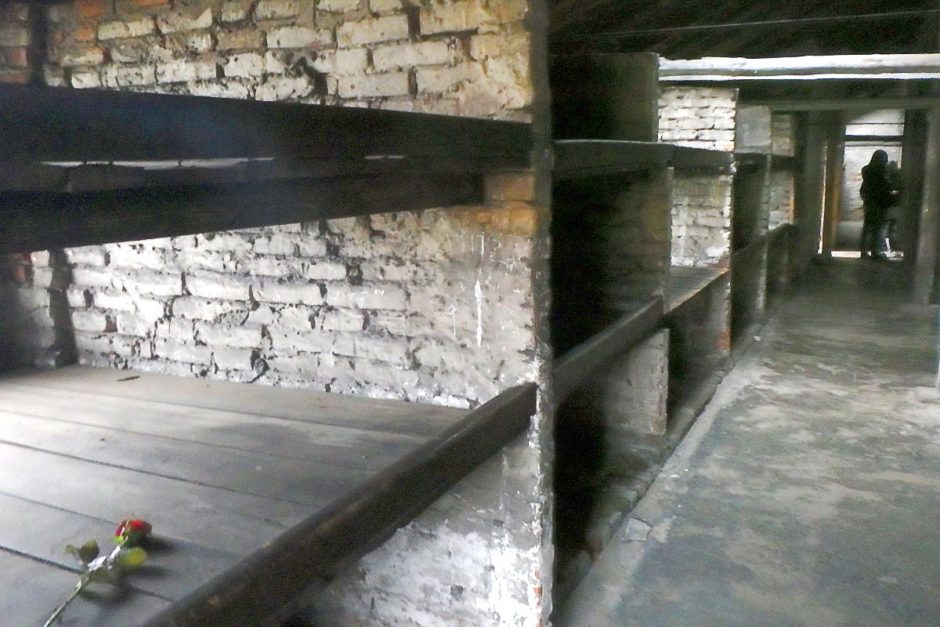
Prisoners’ bunks at Birkenau.
At the back of Birkenau are the crematoria used to kill hundreds of people at a time, plus the pits used to burn the bodies when the corpses became too numerous for the regular facilities. The crematoria were dynamited by the SS shortly before the Soviets arrived and liberated the camp and have been left as they were found. Steps leading down to the now-exposed “shower” chambers are visible, as are the walkways along which the naked prisoners would walk through what must have been an unbearable and pervading atmosphere of hatred and inhumanity. The detonated brick structures are caved in. The cold bare trees behind made for a striking, supremely unsettling image.
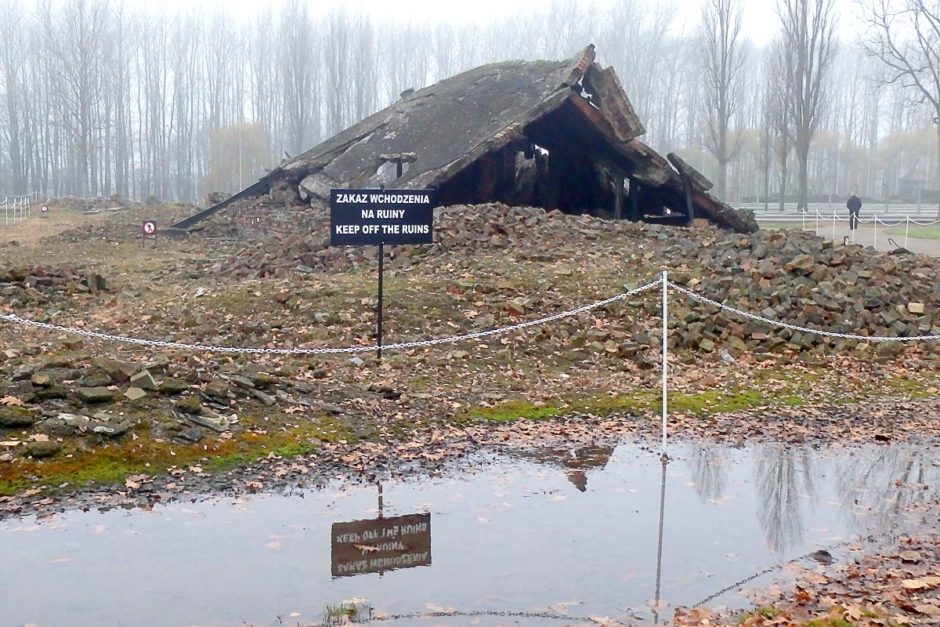
Remains of a crematorium at Birkenau, as it was after the SS dynamited it to cover their activities.
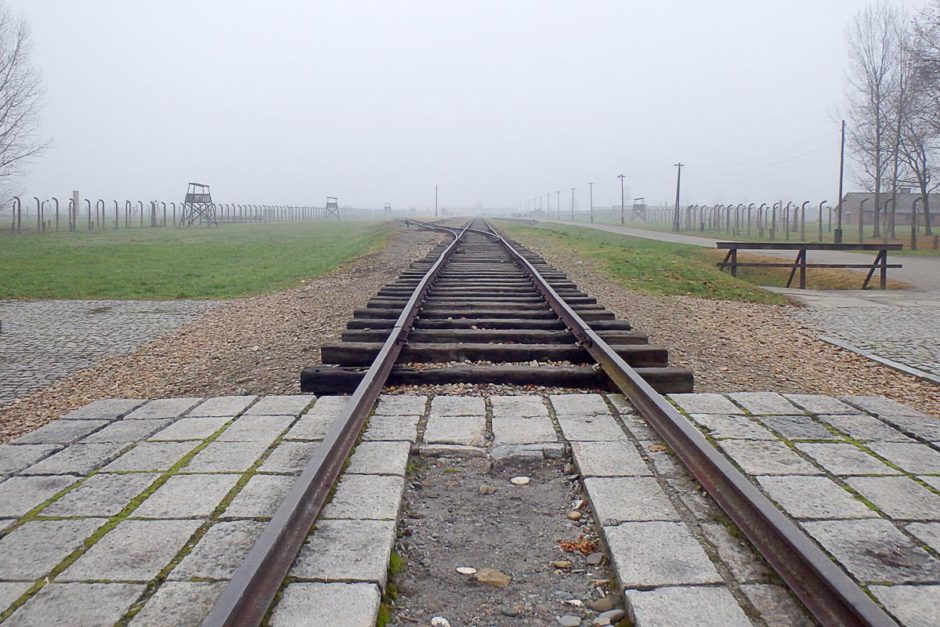
The end of the train tracks, looking back over Birkenau towards the main gate. This is the spot where often unsuspecting prisoners got off the train to be herded into the crematoria and gassed to death.
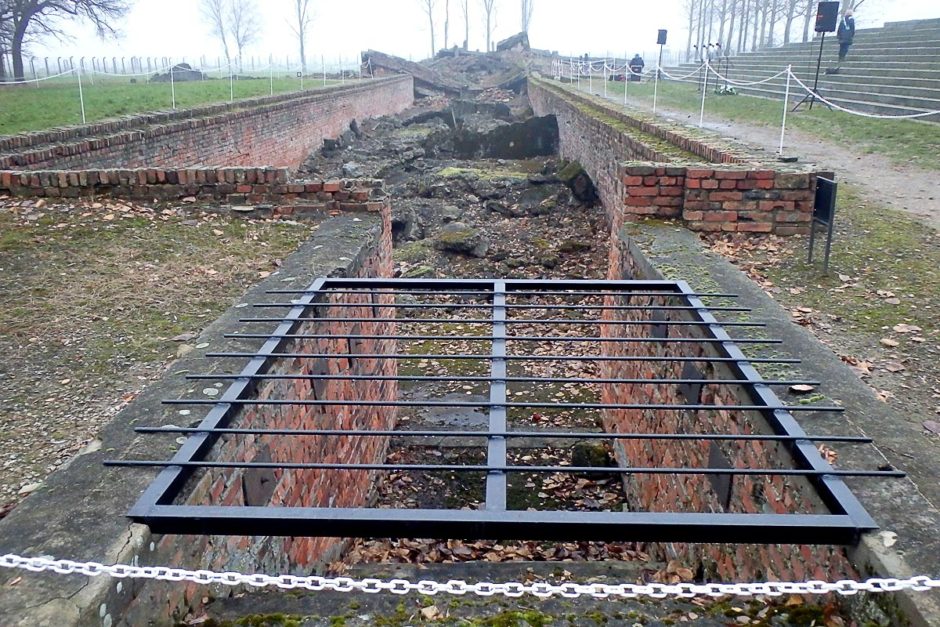
Steps (in the foreground) leading down into one of the crematoria.
At Birkenau I witnessed something that struck me as rather odd: a tour group that was behaving somewhat inappropriately. They were about college age and were laughing and joking and trying to impress each other. And, they were speaking Hebrew and some were wearing or holding Israeli flags. Students from Israel, evidently, right here in Birkenau and acting like they were on an elementary school trip to a museum.
Oh youth.
Behind the crematoria there is a prisoner-processing building. It’s full of interesting displays but unfortunately Masayo and I had to catch a bus back to Kraków that left Auschwitz I at 4:00. We had to walk very briskly through this building.
It was a shame we couldn’t take our time. The official Auschwitz Museum website recommends budgeting three hours for Auschwitz-Birkenau but over four hours we had to skip most of the exhibitions in Auschwitz I and half of Birkenau. We’d have been better off scheduling seven or eight hours.
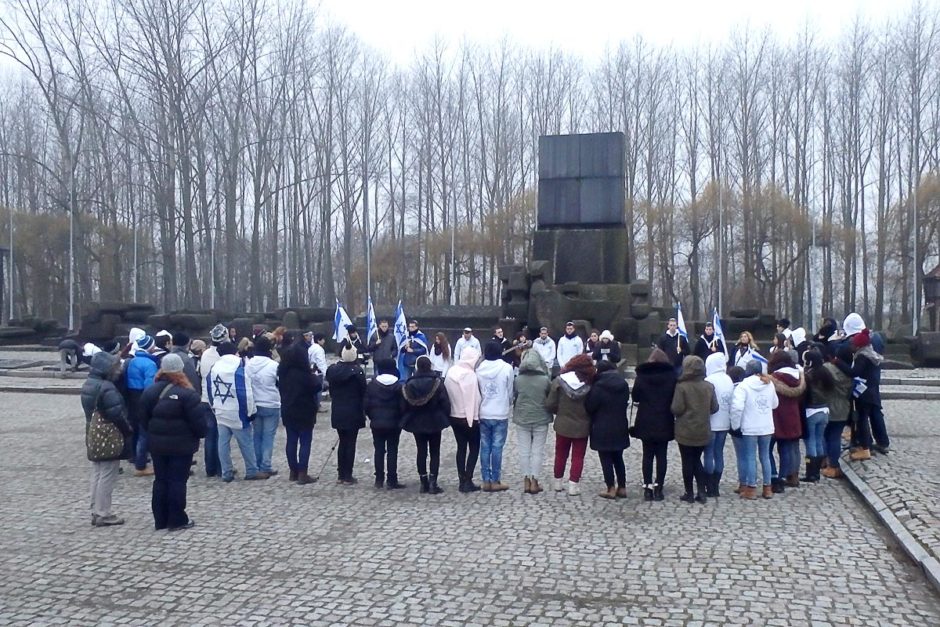
We had to literally run down the long straight dirt road to the entrance of Birkenau, but we made the shuttlebus back to Auschwitz I and found our minibus back to Kraków. (We bought return tickets from the driver when we got on in the morning, which turned out to be good since the bus was full and other tourists couldn’t get on.)
It had been a long day, but, curiously, not as morbid or draining as I’d thought. Cambodia’s S-21 was much more so, although it was tiny compared to this. I think the reason is that I had never heard of S-21 and it came as a shock, whereas Auschwitz and the Nazis and the Holocaust are so famous and the images so well-known that it wasn’t “new”.
But again, it’s still a shock, and it’s important to learn exactly what happened here. Auschwitz-Birkenau is well worth a personal visit. Images and movies don’t really do it justice.
Back to Kraków
It was dinner time in Kraków and we found a Polish restaurant called Czarna Kaczka, where my BG before eating was 108. No readings over 150 today, so far! I got soup in a bread bowl and some Polish dumplings with blueberry and sweet cream sauce. The last time I had soup in a bread bowl, in Gdańsk, my BG soared afterwards. So I took a good-sized Humalog shot.
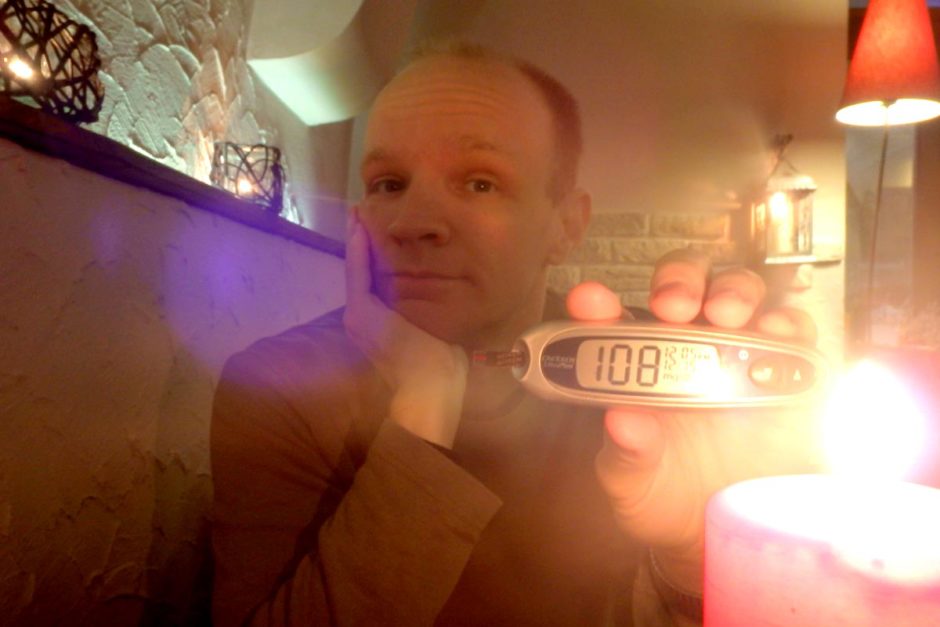
After dinner I stopped at a bakery, Consonni, and bought a piece of chocolate cake, taking insulin and eating it back in the room. That’s a lot of unknown food, plus two shots in a row. Tempting diabetic fate.
It didn’t work out for me. I was 347 at 10:30. I wondered what was in that soup. Or in the dumplings. Oh well. I had some Humalog and went to sleep. All great blood sugars except one terrible one. I’d call that progress.
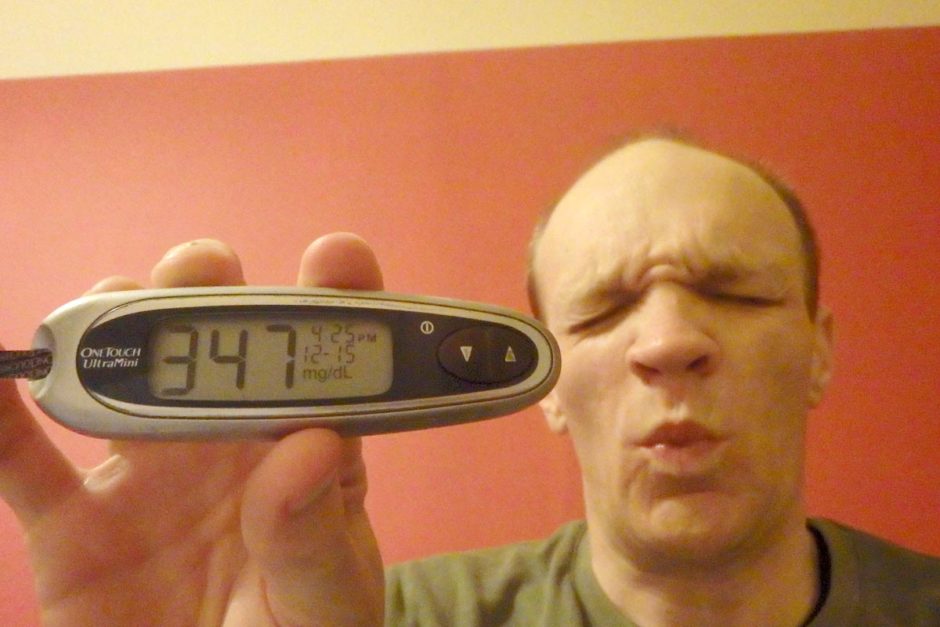
It was a long day today and an important one. My knowledge of World War II is basic, and while I know about the Nazis and their concentration camps, it’s much more eye-opening to see it yourself. I have a feeling that the memory of today and the ghastly images I saw will haunt me for a long time.
As they still do Europe and the rest of the world.
Have you visited Auschwitz-Birkenau?
Thanks for reading. Suggested:
- Share:
- Watch: Video on YouTube
- Read next: Day 34: Eye-opening visit to the Jewish Quarter of Kraków, Poland
- News: Newsletter (posted for free on Patreon every week)
- Support: Patreon (watch extended, ad-free videos and get other perks)
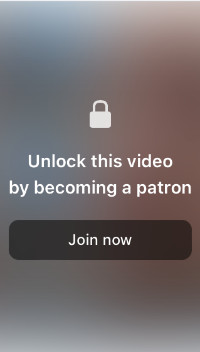
Support independent travel content
You can support my work via Patreon. Get early links to new videos, shout-outs in my videos, and other perks for as little as $1/month.
Your support helps me make more videos and bring you travels from interesting and lesser-known places. Join us! See details, perks, and support tiers at patreon.com/t1dwanderer. Thanks!
